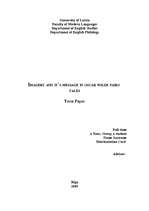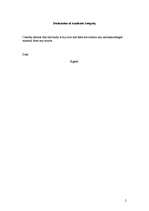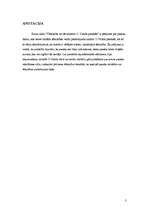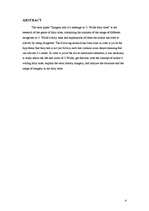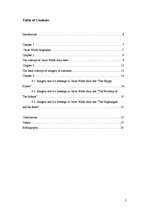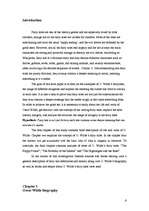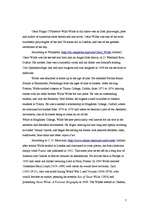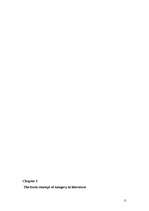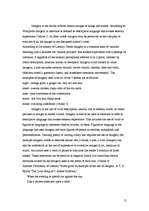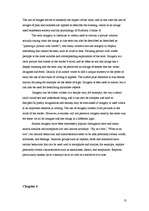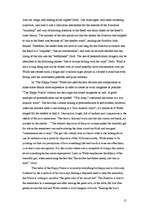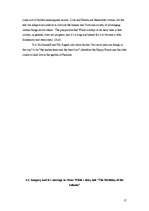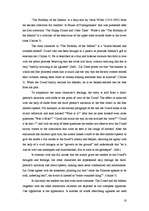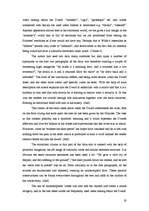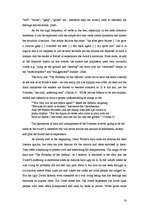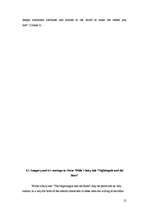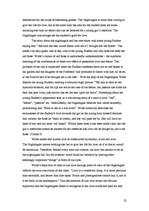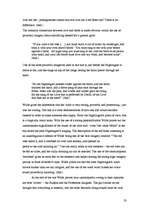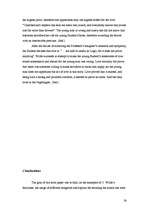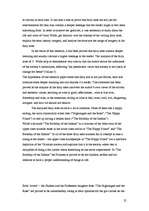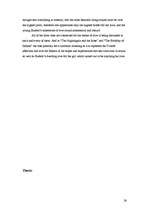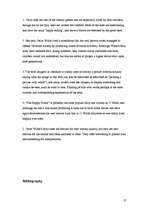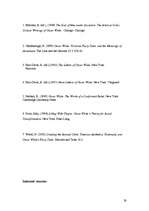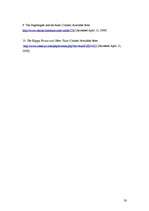-
Imagery and It`s Message in O.Wilde Fairy Tales
| Nr. | Chapter | Page. |
| Introduction | 6 | |
| Chapter 1 | 7 | |
| Oscar Wilde biography | 7 | |
| Chapter 2 | 9 | |
| The concept of Oscar Wilde fairy tales | 9 | |
| Chapter 3 | 12 | |
| The basic concept of imagery in literature | 12 | |
| Chapter 4 | 14 | |
| 4.1. | Imagery and it`s message in Oscar Wilde fairy tale “The Happy Prince” | 14 |
| Conclusions | 25 | |
| Thesis | 27 | |
| Bibliography | 28 |
The goal of this term paper was to find, on the examples of O. Wilde`s fairytales, the usage of different imageries and explain the meaning the author has tried to convey in each case. It was also a task to prove that fairy tales are not just for entertainment for they may contain a deeper message that the reader might in fact learn something from. In order to achieve the goals set, it was necessary to study about the life and work of Oscar Wilde, get familiar with the concept of his writing fairy tales, explain the term literary imagery, and analyze the structure the usage of imagery in his fairy tales.
In the result of this research, it has been proved that fairy tales contain deeper meaning and usually conveys a higher message to the reader. The analysis of the fairy tales of O. Wilde help to demonstrate very clearly that the author shows the unfairness of the society’s institutions, reflecting “his pessimistic views that society is not likely to change for better”(Online 3).
The hypothesis of this research paper states that fairy tale is not just fiction; each tale contains some deeper meaning that can educate it`s reader. This statement has been proved as the analysis of the fairy tales uncovers the author’s own views of the society and aesthetic values, teaching us what is good, affectionate, what is true love, friendship and trust, in the meantime, telling us what is bad, cruel, cold, evil, disgusting, arrogant and how we should not behave.
The analyzed fairy tales do have a lot in common: None of them has a happy ending, the main character(s) either dies (“Nightingale and the Rose”, “The Happy Prince”) or end up having a broken heart (“The Birthday of the Infanta”).
Wilde`s fairytale “The Birthday of the Infanta” is a criticism of the behaviour of the upper class towards those in the lower class and so is “The Happy Prince” and “The Birthday of the Infanta”. In all of the three fairy tales humans fail in attempt to take a liking at the reader – the upper class townspeople in “The Happy Prince” are a symbolic depiction of the Victorian society and explains that it is the society where one is incapable of doing a fair justice about something he has never experienced. In “The Birthday of the Infanta” the Princess is proved to be too childish, selfish and too infantile to have a proper understanding of things in life.
…
Kursa darbs "Imagery and it`s Message in O. Wilde Fairy Tales" izstrādāts LU Moderno Valodu Fakultātē pie pasniedzējas A. Mortukānes(Angļu Filoloģija). Novērtēts ar 9 ballēm. Fragments no darba: To emphasize the main character’s feelings, the story is told from a third-person’s narration with shifts to the point of view of the Dwarf. The effect is achieved with the help of shifts from the third person’s narration to the free direct or the free indirect speech. For example, in the second paragraph of the tale the Dwarf looks at his mirror reflection and asks himself “What is it?” after that he asks himself even more questions “Was it Echo?” “Could she mock the eye, as she mocked the voice?” “Could it be that--?” and with the help of these questions the reader can observe how the Dwarf slowly comes to the conclusion that what he sees is the image of himself. After the realization has dawned upon him, the author makes a shift to the free indirect speech to give the reader a full access to the dwarf’s misery and despair, showing his agony with the help of a vivid imagery as he “grovels on the ground” and understands that “so it was he who was misshapen and hunchbacked, foul to look at the grotesque”. (ibid.)

